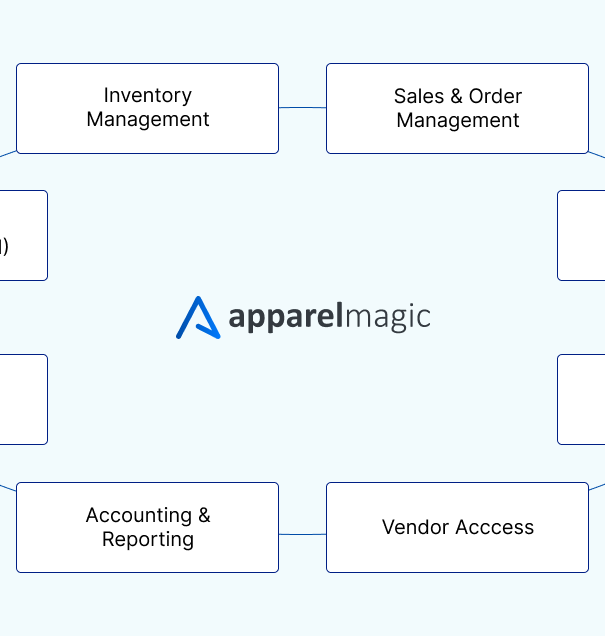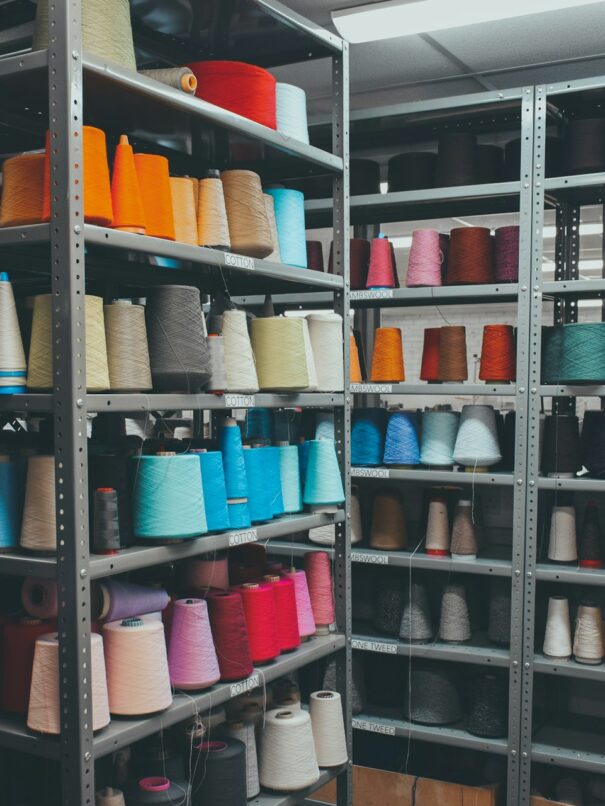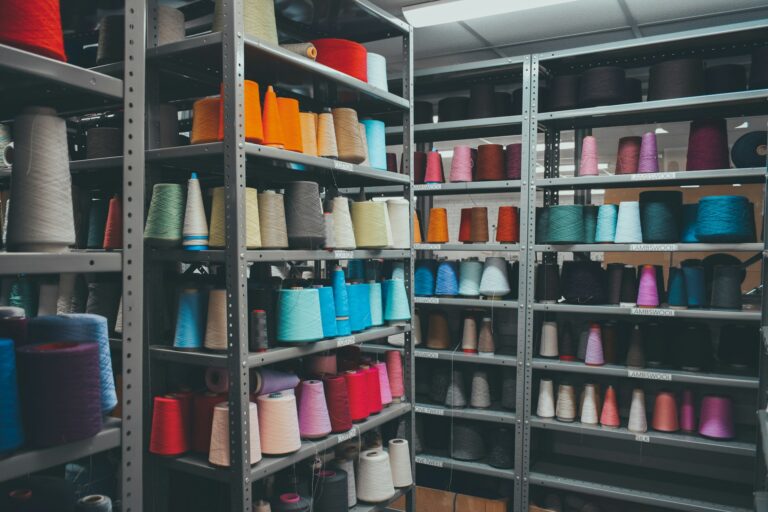Technological advancements, digital technology, and altering consumer behaviors are driving a seismic shift in the fashion apparel industry. According to McKinsey & Company, the digital fashion transformation is not just imminent but essential. Their consumer sentiment surveys revealed a decline in offline shopping intent of 70–80%, while online shopping intent dropped by 30–40% in Europe and North America. This indicates a significant shift toward eCommerce, with data suggesting that some offline sales might permanently transition online. Fashion changes are evident in this shift.
Furthermore, digital tools are not just enhancing sales channels but are also revolutionizing cost structures, supply chains, and customer acquisition strategies. The data-driven approach is becoming the backbone of the apparel industry, with fashion companies that have robust digital and analytics capabilities outperforming their competitors. Fashion changes are reshaping the industry.
In this dynamic environment, operational excellence becomes paramount. It’s not just about keeping up with the fashion cycle; it’s about leveraging it to create a resilient, agile, and forward-thinking business model. The future of fashion looks promising with these advancements.
The Pillars of Apparel Operations
In today’s fast-paced fashion world, the pillars of apparel operations have become more crucial than ever. Starting with the design stage, brands are now focusing on adapting to fast fashion while also incorporating sustainable design trends. Digital tools have become instrumental in planning and executing collections based on real-time market dynamics. When it comes to sourcing and procurement, the emphasis is on building flexible supply chains that are also ethical, ensuring that clothing and products are sourced responsibly.
The production and manufacturing processes have seen a surge in the adoption of technology, with digital solutions streamlining processes and emphasizing sustainability in fashion. Efficient collection management, accurate forecasting, and alignment with market requirements are becoming standard practices. Fashion changes are evident in these processes.
Distribution and logistics are being optimized for efficiency and speed, ensuring that products reach consumers promptly.
And, of course, in retail and sales, the balance between traditional brick-and-mortar stores and eCommerce strategies is pivotal. Brands are leveraging sales data and competitor analyses to refine product offerings and optimize merchandising strategies, ensuring they remain competitive in both physical and digital marketplaces.
The luxury sector and the niche fashion sector are also adapting to these fashion changes.
How Technology Addresses a Wide Range of Challenges in the Apparel Industry and Enhances Operations
ERP Systems
In the dynamic world of fashion, where trends can shift overnight, the pillars of apparel operations are more vital than ever. Enterprise resource planning (ERP) systems, particularly solutions like ApparelMagic, are proving to be the linchpin in fortifying these pillars. Starting with design and development, ERPs facilitate the seamless integration of design conceptualization with market demands, allowing brands to swiftly adapt to fast fashion while championing sustainable fashion.
Tools embedded within these systems empower brands to meticulously plan and execute collections, reflecting real-time market dynamics.
For sourcing and procurement, ERPs emphasize the creation of agile and ethical supply chains. They ensure materials and clothing products are sourced responsibly, with traceability features that offer transparency from raw material to finished product.
In the realms of production and manufacturing, the infusion of technology via ERPs has led to streamlined processes that prioritize sustainable practices. They enable efficient collection management, precise demand forecasting, and production alignment with market needs.
When we venture into distribution and logistics, the prowess of ERPs shines through. They optimize operations for maximum efficiency and speed, ensuring timely product delivery to consumers. This rapidity is crucial in an age where consumer demand and expectations are sky-high. Finally, in retail and sales, ERPs play a pivotal role in striking the right balance between traditional brick-and-mortar outlets and burgeoning eCommerce platforms.
They provide invaluable sales data and competitor analyses, allowing brands to fine-tune product offerings and hone merchandising strategies. This ensures brands maintain a competitive edge in both physical stores and the vast digital marketplace.
Additional Technological Innovations Are Driving Positive Change in the Industry
Data Analytics
In today’s digital age, understanding customer behavior and enhancing the customer experience are paramount. ERP systems come equipped with advanced data analytics capabilities, offering insights into purchasing patterns, preferences, and market trends. By analyzing this data, brands can tailor their offerings, ensuring they meet customer satisfaction demands.
Enhanced communication across the team, facilitated by these systems, ensures that every segment of the business is aligned with the overarching strategy, leading to cohesive and effective operations.
Artificial Intelligence
Artificial intelligence (AI) is transforming the way fashion brands operate. With its ability to analyze vast amounts of data, AI can predict upcoming trends, allowing brands to be proactive rather than reactive. This is especially crucial in an industry where the fashion cycle can change overnight.
Moreover, AI-driven demand forecasting ensures that brands produce quantities that align with consumer demand, reducing the chances of unsold inventory.
3D Printing
3D printing is ushering in a new era in fashion design. Brands can now create prototypes in record time, allowing for rapid iterations based on feedback. This technology also enables unparalleled customization, giving consumers the power to co-create and have products that are truly unique. As sustainability becomes a focal point, 3D printing also offers the promise of producing items on demand, reducing the environmental impact associated with mass production.
Blockchain
Transparency and traceability are becoming cornerstones of the modern fashion industry. Consumers are increasingly conscious of where their products come from and the ethical implications of their purchases. Blockchain technology provides an immutable record of every step in the supply chain, from raw material sourcing to the final product. This ensures that brands can confidently claim ethical and sustainable practices and that consumers can make informed choices.
The integration of these technologies is not just a trend but a necessity for fashion businesses aiming to thrive in the competitive and ever-evolving fashion sector. The future of fashion looks bright with these advancements.

Adapting to Global Challenges
Steering Through Complex Waters
In an interconnected global economy, the fashion industry often finds itself at the crossroads of intricate trade regulations and fluctuating tariffs. These can significantly impact sourcing, manufacturing, and distribution. Brands must stay abreast of changing trade policies and understand how they affect supply chains and pricing structures.
This requires a proactive approach, with companies investing in legal expertise and international relations to ensure they can navigate these complexities without compromising on quality or profitability. The industry’s resilience is evident, with a 21% increase in revenues in 2020–21 and EBITA margins doubling by 6 percentage points to 12.3%. However, the global fashion industry is currently navigating a challenging climate, with hyperinflation and declining growth rates observed in the second half of 2022 and expected to persist through 2023.
Bracing for the Unexpected
The modern world is rife with uncertainties. From unexpected events like the war in Ukraine, which disrupted trade routes and triggered an energy crisis, to further COVID-19 outbreaks and the real estate crisis in China affecting supply chains, the fashion industry is no stranger to challenges. Extreme weather events across Asia have also added to the strain, negatively affecting supply chains and raw material availability. Adapting to these disruptions requires agility and foresight.
Brands must be prepared to pivot, whether that means finding new suppliers, exploring alternative markets, or rethinking marketing strategies. In essence, the ability to quickly respond and adapt to global challenges determines a brand’s longevity and success in the market.
Building Resilience Through Diversification and Contingency Planning
Putting all one’s eggs in a single basket is a risky strategy in today’s volatile global landscape. The fashion industry is learning the value of diversification, whether it’s in sourcing materials, manufacturing locations, or market presence. By spreading operations and investments, brands can mitigate the risks associated with any single point of failure. Moreover, having robust contingency plans in place ensures that when disruptions occur, there’s a clear roadmap to recovery.
This might involve stockpiling essential materials, having backup suppliers, or setting aside emergency funds. In a world of uncertainties, resilience is the key to enduring and thriving. The U.S. fashion market, for instance, is expected to grow between 1 and 6% in 2023, reflecting the effects of inflation and other economic factors, while the European market might shrink between 1 and 4%. Inflation and geopolitical tensions remain top concerns, with 97% of fashion executives forecasting rising costs in 2023 and beyond.
Conclusion
In the ever-evolving landscape of the fashion industry, the integration of digital technology, understanding of consumer demand, and enhancement of the customer experience are paramount. As the fashion cycle undergoes rapid transformations, brands must not only keep pace but also anticipate the future of fashion looks. From the luxury sector to everyday clothing, the industry’s shift toward eCommerce, sustainable practices, and technological innovations like AI and blockchain underscores the profound fashion changes we’re witnessing.
As shopping habits evolve and market changes in fashion arise, the industry’s ability to adapt, diversify, and innovate will shape its future. Brands that prioritize team collaboration, transformation strategies, and resilience will undoubtedly lead the next wave of fashion evolution. As we look ahead, it’s clear that the fusion of tradition with digital technology will redefine the fashion industry, offering unparalleled opportunities for growth and success.







